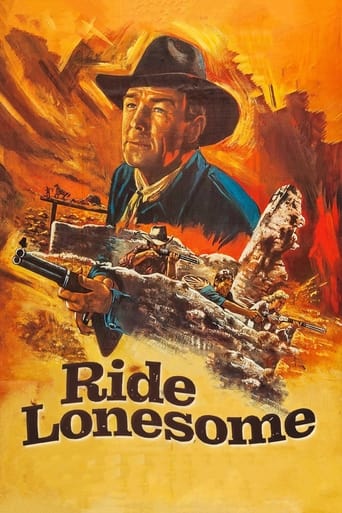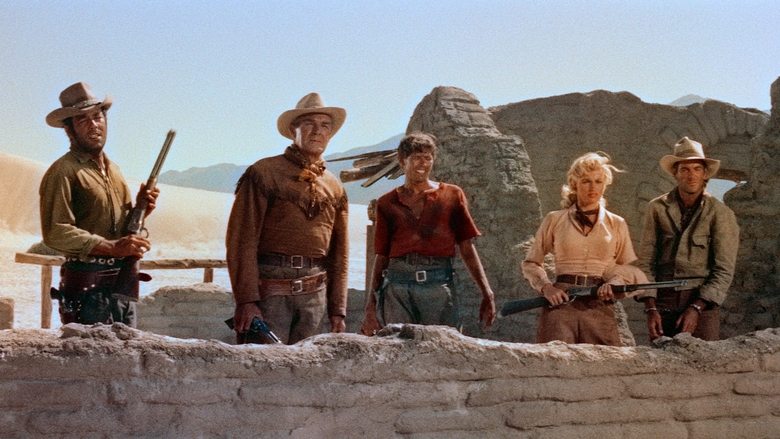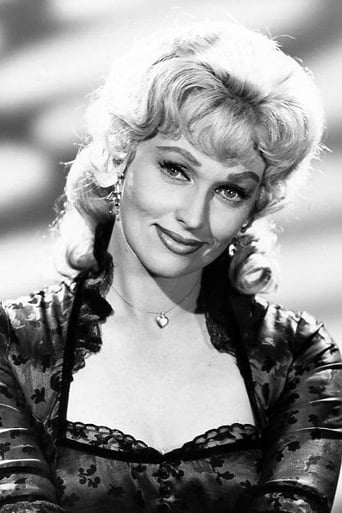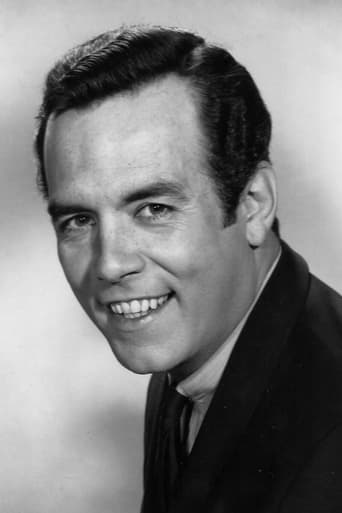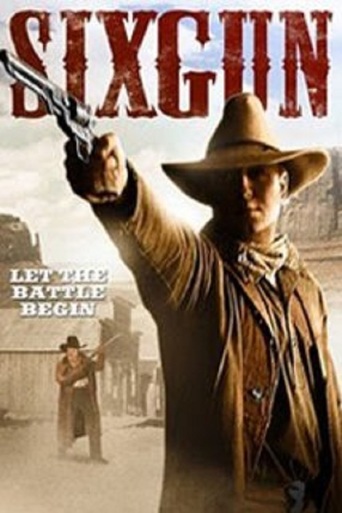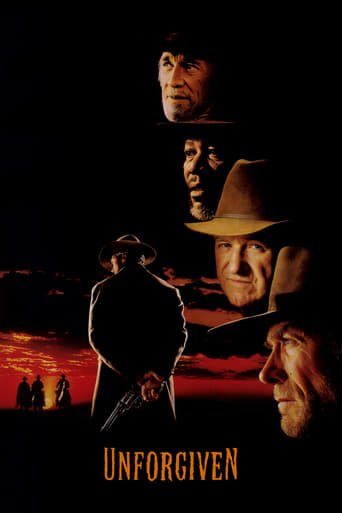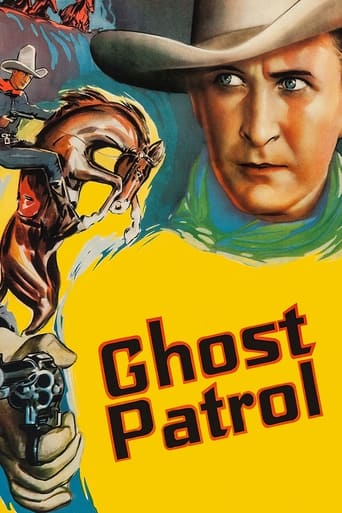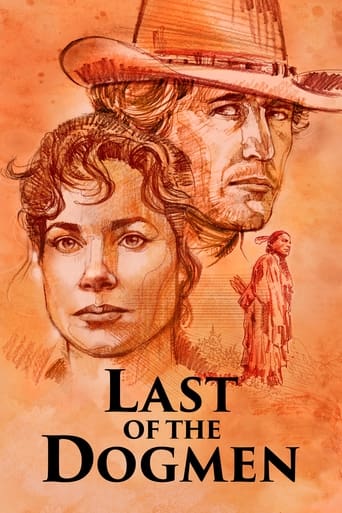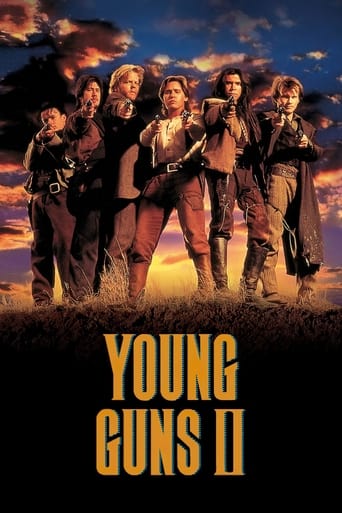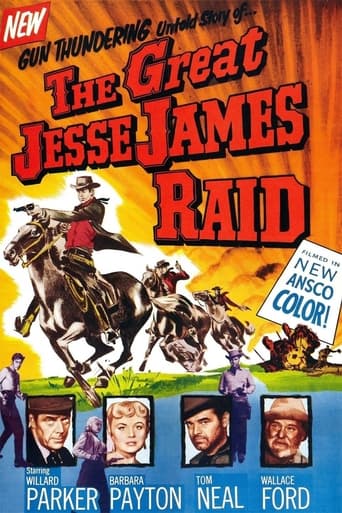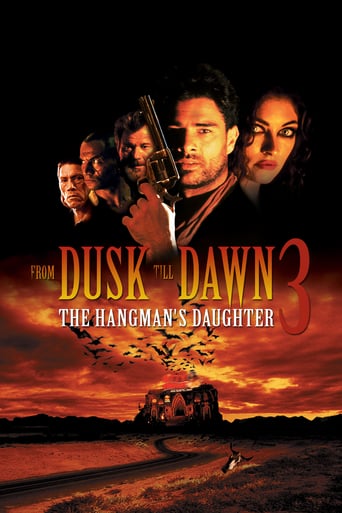Ride Lonesome (1959)
On the way to pick up the bounty on a wanted murderer, a bounty hunter stops at a staging post where he is forced to continue his journey with two outlaws who want the murderer for their own reasons and a recently-widowed woman, with the murderer's brother and his men in hot pursuit.
Watch Trailer
Cast


Similar titles
Reviews
Wow! Such a good movie.
This movie is the proof that the world is becoming a sick and dumb place
Fun premise, good actors, bad writing. This film seemed to have potential at the beginning but it quickly devolves into a trite action film. Ultimately it's very boring.
It’s fine. It's literally the definition of a fine movie. You’ve seen it before, you know every beat and outcome before the characters even do. Only question is how much escapism you’re looking for.
Bounty hunter Ben Brigade (Randolph Scott) captures a criminal notorious for shooting men in the back, Billy Jack (James Best; Dukes of Hazzard), due to hang in Santa Cruz. Billy's older, protective brother, Frank (Lee Van Cleef), and a posse, are following after them. Ben stops by a swing station near a tribe of dangerous Mescaleros, finding two men on the lam from the law, Boone (Pernell Roberts; Trapper John, M.D. & Bonanza) and his young, impressionable pal, Wit (debuting James Coburn) and the station master's wife, Carrie (Karen Steele). Carrie's husband went out to catch runaway horses and hasn't returned, most certain to have encountered the Mescaleros. When an attempted trade between the tribe and Brigade for Carrie goes awry (the horse to be traded for her is Carrie's husband's; Brigade was hoping to deny a trade amicably, but her reaction of horror ruined it), the group will have to fend off the Mescaleros within the ruins of a former station. Knowing Frank and his boys are not far behind (and not in any hurry), riding out in the open without hiding their tracks, Brigade has his own reasons for being so lackadaisical and gradual in the trip back to Santa Cruz. Frank reasons why and knows that Brigade will be waiting for him at the hanging tree. Lean (72 minutes) oater from the great western director Budd Boetticher, once again working with Scott ( at his most austere, with a character not mincing words or immune to his traveling companions intentions for Billy), has superb casting and a satisfying conclusion that doesn't end as you might expect it seems as if Boone and Brigade will gunfight in a draw over Billy, but the whole bounty situation is more about Frank for the bounty hunter than the captured prisoner. The hanging tree is symbolic for both Brigade and Frank, with it a fitting finale between these two to settle their differences. Boone and Wit see an opportunity by taking in Billy amnesty to those with records who bring Billy into Santa Cruz.There are plenty of conversations between Boone and Wit regarding what to do about Brigade so they can earn freedom from looking over their shoulders for "tin stars" (Wit's line about "working the plow, not being good with chickens but being able to slop pigs with the best of them" is a howler); my favorite dialogue scenes, however, involve Boone lusting over Carrie, engrossed by her beauty (Pernell has this look on his face while she's brushing her hair that is pure gold, and how he goes on and on about her to Coburn is quite amusing). Pernell realizing Scott may not force them into a draw over Billy is a hoot (he is exhilarated and rather overly excited). The complications in the plot are held to a bare minimum, primarily concerning the mystery involving Brigade's beef with Frank revealed towards the end when the bounty hunter opens up to Carrie because she understands his pain involving loss under terrible, violent circumstances. The hanging tree on fire is quite a cool visual to close the film as Brigade looks on with obvious sadness at what his conflict with Frank cost him. Good use of California locations to emphasize hot, rough terrain that our heroes must endure while encountering the tribe and Frank's gang. Perhaps a disappointment will be how quickly the Frank and Brigade gunfight starts and ends, but Billy's hanging from a rope adds quite a spin to this shootout when the gunfire spooks the horse leaving him to dangle until the smoke clears. I thought Frank's men tucking tail and riding off when it appears they're in trouble was hilarious it spoke volumes about how Frank's presence gave them their only real courage, and once he's removed from the equation they're investment in this cause flees about as fast as they skedaddle.
If you are not particularly a Western movie fan, but are a film buff who feels an obligation to visit all genres, there are some Directors that epitomize and rise above the pack. It is with these Artisans you can savior that which is the best of an admitted overload of mediocrity and banality.The Westerns of Directors...Budd Boetticher, Anthony Mann, Sam Peckinpah, Sergio Leone, and if you want to get into the more mainstream, John Ford.Here we have one of seven films that Boetticher did with Randolph Scott and with the always excellent writer Burt Kennedy's curt, colorful dialog. Speaking of colorful. This one was filmed in Cinemascope and the stylistic inclusion of landscape as character is on display here in all it's encompassing beauty. There is nary a close-up in this film and there is no need. It is so well framed the characters are developed by their words, position, and posture. As always the Director delivers style as well as substance and populates the movie with interesting multi dimensional characters and the cast is outstanding. This is primal as well as evolutionary and humorous as well as deadly serious. A rich and elegant film that is a parade of people through a place within a time when there was an individual and not a collective code of honor.
Randolph Scott captures young killer James Best and intends to take him to Santa Cruze to be hanged for murder, and collect the reward. Along the way he runs into two miscreants, Pernell Roberts and his sidekick James Coburn, who would like to take Best in themselves, in return for which they would received amnesty. ("Ain't that a great word?") They also provide protection to a woman, Karen Steele, who wears a pointed 1950s brassiere throughout and is there chiefly to stimulate the glands of Roberts. (Scott, after listening to Roberts praise the various physical and characterological properties of Steele: "She ain't ugly.") The conflict intrinsic to this arrangement is that Scott, on the one hand, and Roberts and Coburn on the other, seem to be at cross purposes. If Scott doesn't hand over the prisoner, then Scott gets the bounty but Roberts and Coburn don't get their amnesty. Roberts reluctantly informs Scott that, sooner or later, Scott will be shot. Meanwhile they must hang together under threats from Apaches and from Best's brother and his gang, who are in hot pursuit.Of the several movies that Randolph Scott and director Budd Boetticher made together, I think I probably enjoy this one the most -- this and "Seven Men From Now." It's a leisurely travel story set among the stucco-textured rocks of Movie Flats, California. The story is simple, the location shooting impressive, and the dialog by Burt Kennedy sings with a kind of folk lyricism. (If you get amnesty, "You don't have to shiver every time you see a man wearin' tin.") Scott is his stalwart, taciturn self. Coburn's dim-wittedness provides some gentle humor. Pernell Roberts fakes a Southern accent and seems to be enjoying the camera a little too much, which turns him into a self-satisfied Hollywood actor instead of a sympathetic and colorful criminal. The nicest performance may be that of James Best as the callow, somewhat sensitive, but doomed murderer. He's given the line that warns Karen Steele to stay away from the body of a man slaughtered by Indians: "Ain't nothing' for a woman to see!" Yet, watching these collaborative efforts in sequence, as I've been doing -- why it sets a man to wonderin' what it is that keeps them entertainin' stead of a mite more than that. Of course the budgets were low, but some directors have been able to overcome such strictures. The musical scores were by Heinz Roemheld and they're pedestrian. The five scripts written by Burt Kennedy are better than the rest. And there's an awful lot of repetition. There's nothing wrong with quoting yourself. John Ford often had men splashing a glass of whiskey into a fireplace and having it flame up. Howard Hawks repeated himself often, including single lines like, "Good luck to you." Hitchcock had his cameos and Huston often dubbed his voice somewhere into the mix. But those were self-conscious tricks, a kind of joke, whereas here the repetitions seem to stem from a conviction that the audience doesn't pay enough attention to notice them.Not to go on about it. It was an enjoyable series and this example is an exemplary one.
Ride Lonesome is directed by Budd Boetticher, written by Burt Kennedy and stars Randolph Scott, Karen Steele, Pernell Roberts, James Coburn, James Best & Lee Van Cleef. Charles Lawton Jr is the cinematographer (in CinemaScope for the Alabama Hills, Lone Pine, California location) and Heinz Roemheld provides the musical score. Film is part of the Ranown Western cycle involving Boetticher, Scott, Kennedy and producer Harry Joe Brown.Bounty hunter Ben Brigade (Scott) captures wanted outlaw Billy John (Best) and tells him he's taking him to Santa Cruz to be hanged. Best boasts that his brother Frank (Cleef) will soon be arriving to ensure that doesn't happen. Brigade isn't the least bit bothered by this statement. The two men stop at a Wells Junction, a remote swing station, where they encounter Boone (Roberts) & Whit (Coburn), two drifters, and Mrs Lane (Steele), the station attendant's wife. With Mr Lane missing and the Mescalero Apache's on the warpath, the group decide to collectively travel to Santa Cruz, but hot on their trail are the Indians and Frank's gang. There's also the small matter of motives within the group, seems Boone & Whit, too, have a special interest in Billy, while Brigade may have something far more ulterior driving him on.As the decades have rolled by, the Boetticher/Scott Westerns have come to be rightly regarded as genre high points. Between 1956 to 1960 they produced 7 pieces of work. The weakest of which were the more jovial Buchanan Rides Alone (1958), and the Kennedy absent WB contract filler, Westbound (1959). The remaining five each follow a familiar theme that sees Scott as a man driven by emotional pain, movies with simmering undertones and pulsing with psychological smarts. Poll a hundred Western fans for their favourite Boetticher/Scott movie and you will find any of the five being mentioned as a favourite: such is the tightness and intelligence of each respective picture.So we are out in the desolated Old West, it's harsh and weather beaten. Our five characters are either troubled by death-prior and pending-or searching for a life that may be a touch too far from their grasp. As their journey unfolds, loyalties will be tested and shifted, uneasy bonds formed, psychological and sexual needs bubble away under the surface. All viewed by the enveloping Alabama Hills: with Mount Whitney the chief patriarch overseeing his charges. Ride Lonseome, is a stunning movie, an elegiac piece, one that's bleak yet not without hope, a collage of tones seamlessly blended together to create one almost magnificent whole. The first Boetticher movie in CinemaScope, the film is directed with great economic skill, the whole width of the screen is creatively used by the director, placing the characters in the landscape like Anthony Mann used to do with Jimmy Stewart. His action construction is smart and it should be noted that there is not one interior shot in the film. Lawton Jr sumptuously shoots in Eastman Color, actually a perfect choice for the rugged terrain and the wide, lonesome inducing open spaces provided by the Scope format. While Kennedy's script is sparing, perfectly so, the dialogue is clipped but very telling. And crucially there's no manipulation in the narrative.Then of course there's the cast. Scott leads off with one of his brave, ageing man of few words portrayals, a character with inner sadness gnawing away at him. With just one glance and a couple of words, Scott actually provides more depth than most other actors in the genre were able to do with more meatier parts. With the lead protagonist established, Boetticher surrounds him with fine support. Coburn was making his film debut and with his tall frame and distinctive voice he leaves a good impression, mostly because he works so well off of Roberts' more outwardly tough turn. Their partnership gives the film a believable friendship at its centre, lovable rogues perhaps? And they also provide some of the lighter moments that Boetticher and Kennedy use to tonally keep us guessing. Steele is just sultry, a blonde fire cracker in the middle of a potential hornets nest. While Best does a nice line in snivelling weasel, his characters trait being that he shoots his victims in the back. As for Cleef? He's barely in it, but after his characters introduction into the story, his presence hangs over proceedings like a dark heavy cloud. He will be back, tho, and rest assured it's worth the wait.Does Ride Lonesome have flaws? Yes. One thing is that at 73 minutes it's too damn short. But moving away from that particular greedy itch of mine, the film does carry some Western clichés. Most notably with the Indian participation in the story. Be it chases, portentous smoke signals or an adobe corral attack-where our group are of course outnumbered-it's stock Cowboy & Indian fare. Not helped by Roemheld's music, which only reinforces the clichés. Thankfully in Boetticher's hands the clichés are overcome by the scenes raising the pulse, and in one particular sequence, providing the basis for a terrific tracking shot. Roemheld does deliver the goods for the finale, tho, and what a finale it is too. Featuring a tree shaped like a cross, the ending has sparked many an interpretation. Some way too deep (French critics) & some just bizarre (internet sleuths), when actually the interpretation is simple; hell they even got Martin Scorsese to explain it on the DVD. The memorable shot involving the tree, as the music pounds away, can induce pounds of goose-flesh on the skin, powerful it is. As endings go in the Boettticher canon? It gives Comanche Station's riderless horse finale a run for the title of being his, and Scott's, best. A near masterpiece from a true auteur. 9/10

